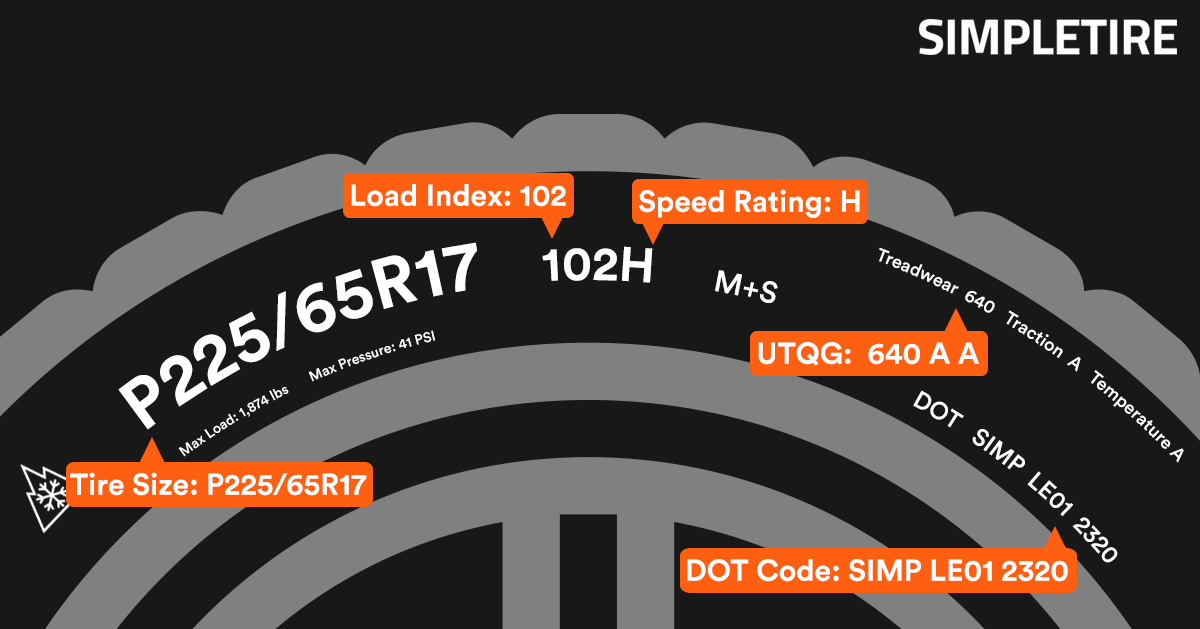Tire Maintenance & Safety
Best price guarantee
Tire replacement coverage
24/7 roadside assistance
Easy returns

Tire size is a crucial factor when it comes to ensuring a smooth and safe ride. Understanding the dimensions of your tires can help you make informed decisions when purchasing new ones or comparing different options.
A tire diameter calculator is a valuable tool that simplifies the process of determining tire size. By inputting a few key measurements, you can quickly and accurately calculate the overall diameter of a tire, ensuring compatibility with your vehicle's wheels.
In this article, we'll explore the concept of a tire diameter calculator and provide a step-by-step guide on how to use one effectively. We'll also discuss the benefits of using such a tool and how it can assist you in selecting the right tires for your vehicle.
What is a Tire Diameter Calculator?
A tire diameter calculator is a handy tool designed to help you determine the overall diameter of a tire based on its size code. By inputting the width, aspect ratio, and wheel diameter—all of which can be found on the tire's sidewall—the calculator will provide you with the tire's total diameter.
This information is essential when comparing different tire sizes or ensuring that a new set of tires will fit your vehicle's wheels. Using a tire diameter calculator takes the guesswork out of the equation, providing accurate results and helping you make informed decisions.
The beauty of a tire diameter calculator lies in its simplicity. You don't need to be a tire expert or have extensive knowledge of tire sizing to use one effectively. Most online calculators are user-friendly and require only a few pieces of information to generate results.
How to Use a Tire Diameter Calculator
Start by identifying the size markings on your tire. These markings, usually in a sequence like "P215/65R15", are found on the tire's sidewall and are crucial for determining tire dimensions.
Key Tire Measurements
- Width: This figure indicates the tire’s section width, measured in millimeters across the tread.
- Aspect Ratio: This percentage refers to the height of the sidewall relative to the tire's width. For example, an aspect ratio of 65 denotes that the sidewall height is 65% of the width.
- Wheel Diameter: This is the diameter of the wheel the tire is designed to fit, measured in inches.
Operating the Calculator
Once equipped with this data, proceed to an online tire diameter calculator. Enter the width, aspect ratio, and wheel diameter precisely to obtain the tire’s diameter. Accurate input is essential for reliable results, which are vital when evaluating alternative tire sizes for your vehicle. By utilizing this tool, you can ensure that any new tire options will suit your vehicle’s specifications, maintaining optimal performance and safety.
Step 1: Input Tire Size Details
Accurate input into the calculator is essential for determining the correct tire dimensions. Start by locating the alphanumeric code on the side of your tire. This code provides all the necessary details for the calculation process.
Ensuring Precision
- Emphasize Correct Data: It is important to input the exact width, aspect ratio, and wheel diameter as noted on the tire. Any deviation could result in incorrect dimensions, which impacts your vehicle's performance.
- Confirm Each Entry: After entering the information, cross-reference with the tire's sidewall to ensure accuracy. This step prevents potential errors and discrepancies.
Using the Tire Code as a Guide
The tire code acts as a reliable guide for your inputs. By adhering closely to this standardized information, you ensure that the calculator's results accurately reflect your tire's specifications, aiding in selecting the best fit for your vehicle.
Step 2: Calculate Tire Diameter

After entering the required details, proceed to calculate the tire’s dimensions. The tire diameter calculator quickly processes this information, making it easy to determine the tire's overall size with precision. Simply press the 'Calculate' button to get the measurements you need.
Checking the Calculated Dimensions
Once the diameter is calculated, take a moment to examine the results. Ensure that the dimensions align with your vehicle’s needs for proper fit and function. This step is vital for maintaining the vehicle's performance and handling characteristics.
- Confirm Fit: Make sure the calculated diameter matches the specifications required for your vehicle. This avoids issues like incorrect speedometer readings or compromised handling.
- Explore Other Options: Use a tire size comparison tool to assess alternative sizes if the current size does not meet your expectations or requirements. This feature helps in finding suitable alternatives that maintain safety and performance.
Ensuring Proper Fitment
Proper fitment is crucial when selecting tire sizes. The calculated dimensions should not only fit but also enhance your vehicle's performance. If there's any uncertainty, consulting a professional or referencing manufacturer guidelines helps ensure you choose the right tire size for your needs.
Step 3: Analyze Compatibility
With the tire dimensions calculated, it's essential to ensure these measurements align with your vehicle's specific requirements. This step is key to confirming that the new tires will fit well and perform effectively. Assessing compatibility helps prevent negative impacts on handling, braking, and overall vehicle safety.
Aligning with Vehicle Guidelines
First, compare the calculated tire dimensions with your vehicle's guidelines, often found in the owner's manual or on a label inside the driver's door. This comparison ensures that you maintain the vehicle's designed performance and safety levels.
- Wheel Well Fitment: Verify that the tire's width and diameter will fit comfortably within the wheel well, leaving adequate space for movement during turns and when encountering bumps.
- Impact on Suspension and Braking: Tire size plays a role in suspension dynamics and braking performance. Choosing a compatible size preserves the intended responsiveness and effectiveness of these systems.
Identifying and Mitigating Compatibility Concerns
Incompatibility can manifest as increased wear on vehicle components or inaccurate speed readings. Addressing these issues is vital to maintaining safety and comfort.
- Prevent Rubbing: Ensure the tire has sufficient clearance to avoid contact with the wheel well or suspension parts, which can lead to damage and unsafe driving conditions.
- Handling Adjustments: Modifying tire size can influence vehicle handling. Confirm that the new tire size supports or enhances the handling characteristics you expect.
Choosing Suitable Tire Options
Utilize the results from the tire diameter calculator to explore tire options that fit your vehicle's specifications. Consider performance, durability, and cost when selecting tires. Focus on options that offer the best balance while meeting all necessary criteria for your vehicle, ensuring a secure and enjoyable driving experience.
Step 4: Make Informed Decisions
Making informed decisions about tire selection requires using detailed insights from the tire diameter calculator. This information is crucial for choosing tires that not only fit your vehicle but also enhance its overall performance. By effectively applying these insights, you can ensure that your tire purchase meets both safety and driving comfort standards.
Selecting the Right Tires
Start by comparing the calculated dimensions with potential tire choices. This comparison helps verify that the selected tires provide the necessary traction and support for your vehicle type. Consider the impact of tire features like tread pattern and sidewall construction on your driving conditions and preferences.
- Optimized Traction: Choose a tread pattern that aligns with your driving environment, whether it's wet roads, off-road paths, or smooth highways.
- Comfort and Durability: Consider sidewall construction that balances comfort and strength, suited to your vehicle's demands and your driving style.
Ensuring Safety and Compatibility
Ensure that the new tire sizes meet your vehicle's safety guidelines. This step involves verifying that the tires will not only fit but also maintain the vehicle's handling and balance. Correct size selection prevents issues like uneven tread wear and potential strain on the vehicle's suspension system, contributing to safety.
- Maintaining Vehicle Dynamics: Properly sized tires preserve the vehicle's weight balance and handling characteristics, ensuring stable and predictable performance.
- Reducing Component Stress: Choosing compatible tire sizes minimizes stress on suspension parts, extending their lifespan and reliability.
Utilizing the comprehensive data from the tire diameter calculator empowers you to make choices that enhance your vehicle's safety and performance. This thoughtful approach ensures a tailored driving experience, catering to your specific needs and expectations.
By leveraging the power of a tire diameter calculator, you can confidently select tires that optimize your vehicle's performance and safety. With this knowledge in hand, you're well-equipped to make informed decisions when purchasing new tires. At SimpleTire, we're committed to simplifying the tire-buying process, offering a wide selection of high-quality tires at competitive prices, so you can shop for tires online and find the best deals with ease.
Ready to find the perfect tires?
Search By